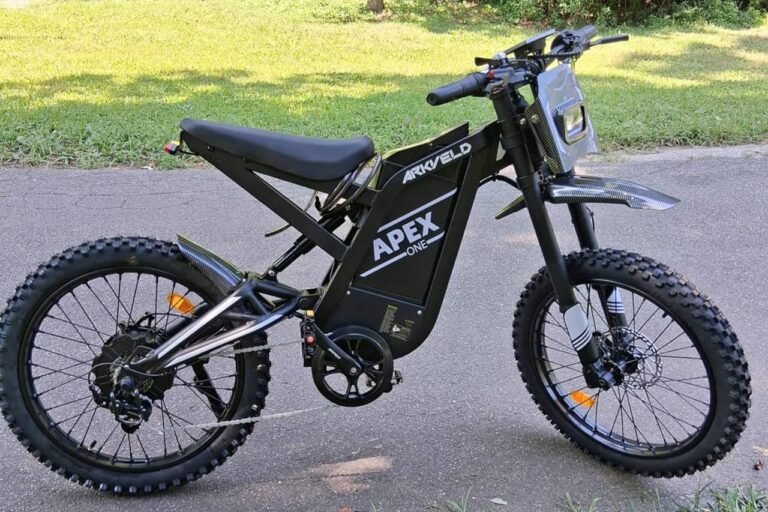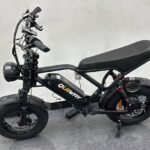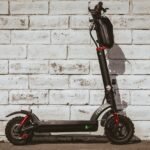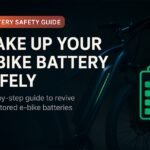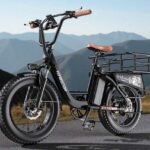![Is the Narrak S180 the Best Folding E-Trike for Daily Errands? In-Depth Review ([year]) Narrak S180 Folding Electric Tricycle Review: Best Trike Ever?](https://goebikelife.com/wp-content/uploads/2024/09/Narrak-S180-Folding-Electric-Tricycle.jpg)
![Is the Narrak S180 the Best Folding E-Trike for Daily Errands? In-Depth Review ([year]) Narrak S180 Electric Tricycle with rear basket and fat tires](https://goebikelife.com/wp-content/uploads/2024/09/Narrak-S180-Electric-Tricycle.jpg)
Narrak S180 Electric Tricycle — Stable, Folding & Cargo-Ready
Our take: confidence-inspiring e-trike with hydraulic brakes, rear differential, and a UL-certified 48V battery—ideal for errands and daily rides.
- Rear differential + hydraulic 3-disc brakes with parking brake for secure control
- UL-certified 48V 13Ah battery; 4–6h charge; up to 40–50 miles in PAS mode
- 750W hub (1350W peak), PAS + throttle; 20×4.0 fat tires; step-through folding frame
- Motor
- 750W rear hub (1350W peak)
- Battery
- 48V 13Ah • UL-certified
- Top Speed
- 20 mph (Class-2)
- Range
- Up to 40–50 miles
If you’ve been eyeing an electric trike that’s easy to mount, steady at low speeds, strong on hills, and practical for daily errands, the Narrak S180 is squarely in that sweet spot.
It’s a step-through, folding, fat-tire e-trike with a rear differential, hydraulic disc brakes on all three wheels, and a UL-certified 48V 13Ah battery.
On paper, it promises the “car-alternative” convenience many riders want without the learning curve that turns people off two-wheel e-bikes.
Over the last several weeks I put miles on an S180 across bike paths, neighborhood streets, light gravel, and grocery runs.
I focused on three big questions buyers ask: Is it truly stable and confidence-inspiring? Does the powertrain feel strong enough for real-world hills and cargo? And does the package—brakes, battery, display, storage—feel sorted and durable?
Narrak is known for approachable, value-forward commuter e-bikes and trikes that emphasize ease of use over bleeding-edge sport performance.
The S180 follows that brief but adds meaningful upgrades: hydraulic discs with a parking brake, a rear differential that lets the two rear wheels rotate at different speeds in turns, and genuinely useful front and rear baskets out of the box.
This review refers to the current-spec S180 (750W nominal / 1350W peak rear hub, 20″×4.0″ tires, step-through folding aluminum frame, 7-speed drivetrain, M5 LCD, and hydraulic braking).
Is the Narrak S180 for you?
If stability is your number-one requirement—perhaps you’re returning to cycling after a long break, you have balance considerations, or you simply prefer three wheels for low-speed confidence—the S180 is immediately reassuring.
The step-through frame and moderate standover make mounting simple, while the wide rear track and fat tires reduce the “tippy” feel some narrow trikes suffer.
Urban and suburban errand runners will appreciate the practical design.
Between the large rear cargo basket and the front basket, I could haul a full grocery run plus a backpack.
The 20 mph class-2 ceiling is commuter-friendly, and the hydraulic parking brake makes curbside stops safer—no worrying about a loaded trike rolling on a slight incline.
Riders tackling rolling hills or carrying cargo will like the 750W rear hub with 1350W peak assist and walk mode.
The rear differential is not marketing fluff; it improves turning behavior versus single-axle trikes by letting the inside and outside wheels rotate at different speeds, which means less scrub and a tighter, more predictable arc in neighborhood corners.
Who is the S180 not for?
If you want 28 mph class-3 speeds, a long-range dual-battery platform, or sporty handling at 25+ mph, look elsewhere.
This trike is tuned for comfort, load-carrying, and controlled cruising—not for fast road riding.
On budget: I’d place the S180 in the mid-range of e-trikes.
You’re getting hydraulic brakes, differential, baskets, and a folding step-through frame—useful features rarely found together under ultra-budget options, but you aren’t paying luxury-tier money either.
Beginner-friendly? Absolutely.
Between PAS levels, throttle, walk mode, and the clear M5 LCD, the learning curve is mild.
Assembly is straightforward thanks to the high level of pre-assembly and a labeled toolkit.
What We Like About the Narrak S180
Confident handling from the differential.
Most first-time trike riders notice two things in turns: rear-wheel scrub and a tendency to understeer.
The S180’s differential meaningfully reduces both.
It still wants you to slow down for tight corners—as any trike does—but the path you intend to take is easier to hit, and the rear end feels composed rather than skittery.
Hydraulic braking on all three wheels.
Hydraulic discs are a welcome upgrade versus the cable-actuated mechanical systems common at this price.
Lever feel is lighter, modulation is better, and wet-weather consistency is superior.
The integrated parking brake is more than a convenience: on slopes with a loaded basket, it keeps the trike planted while you hop off.
Approachable power with useful PAS tuning.
The 750W rear hub (1350W peak) doesn’t surge or spin the tire; it feeds in smoothly and has enough torque to pull away from stops without drama.
I preferred PAS 2–3 on flats and PAS 4 for longer grades.
The throttle is helpful for walking the trike loaded or getting across busy intersections.
Practical frame and storage.
The step-through aluminum chassis keeps the center of mass low and makes mounting possible in everyday clothes.
The folding hinge is robust and genuinely useful for transport or storage—handy if your garage is tight or if you occasionally load it into a vehicle with the wheels down.
Both front and rear baskets are large enough for real errands, not just a handbag.
Comfort where it matters.
The 20″×4.0″ tires take the edge off cracks and curbs, and the upright cruiser bar puts the wrists and shoulders in a relaxed position.
The seat and backrest combination is supportive for longer rides.
While this isn’t a full-suspension trike with a rear swingarm, the ride remains pleasantly cushioned for city speeds.
Safety touches and ease of living.
A UL-certified 48V 13Ah battery, mirrors, bright lighting, hydraulic parking brake, and walk mode add up to a platform you can trust day and night.
The M5 LCD gives speed, PAS level, trip, and battery state at a glance, and the system wakes quickly.
Assembly is simple: the unit arrives roughly 85% pre-assembled with a labeled toolkit and clear instructions.
What We Don’t Like About the Narrak S180
Single-battery range is “good,” not “great,” under heavy loads.
Narrak quotes up to 40–50 miles in PAS.
Light riders on flat paths will flirt with that number, but frequent throttle use, hills, cold temperatures, or cargo can halve it.
A higher-capacity or dual-battery option would better suit riders who want long weekend rides without charging.
Top speed capped at 20 mph.
Class-2 compliance is a plus for accessibility and legality, but some riders on open paths will wish for class-3 speed.
The upside is stability: at 15–18 mph the S180 feels planted, with predictable steering and brakes that have plenty in reserve.
It’s a trike—respect the physics.
Compared with a two-wheeler, a trike can’t lean into corners.
Even with the differential, you still need to slow for tight bends and avoid sharp steering inputs on rough pavement.
That’s not a flaw of the S180; it’s an inherent trike trait worth emphasizing for new riders.
Weight and portability.
The folding frame is a genuine benefit for storage, but lifting an e-trike into a hatchback is still a two-person job for most.
If you plan to transport it frequently, consider a ramp or vehicle-mounted carrier rated for trikes.
Comfort details that could be better.
The seat-back angle is fixed and may need fine-tuning for some body shapes.
The front basket can rattle over cobbles if you don’t snug the hardware after the first few rides.
And while the M5 display is clear, there’s no companion app or Bluetooth connectivity.
Pros & Cons
| Pros | Cons |
|---|---|
| Stable, confidence-inspiring handling with rear differential | Single 48V 13Ah battery—range drops with hills/cargo |
| Hydraulic disc brakes on all three wheels + parking brake | 20 mph cap won’t satisfy speed seekers |
| Step-through aluminum frame; easy to mount | Heavy to lift—folds for storage, not light transport |
| Folding design for tighter garages or vehicles | Front basket can rattle if hardware loosens |
| UL-certified battery, walk mode, mirrors, bright lighting | Display lacks app/Bluetooth features |
| Real cargo capacity with front + rear baskets | Trike physics: slow for tight turns |
| Smooth 750W (1350W peak) hub with sensible PAS tuning | No rear swingarm suspension; comfort relies on tires/seat |
What’s Included?
- Narrak S180 electric tricycle (20″×4.0″ tires, 7-speed drivetrain)
- 48V 13Ah removable UL-certified battery
- 48V charger
- Front basket & rear cargo basket (upgraded large-capacity set)
- Full-coverage fenders (front and rear)
- Hydraulic brake system with parking brake set up from factory
- Pair of rear-view mirrors
- Headlight and integrated tail/brake light
- M5 LCD display and handlebar controls
- Tool kit with numbered hardware for final assembly
- User manual and installation guide
- Two to four keys for battery lock (varies by shipment)
You can be riding within an hour if you’re handy with basic tools.
The front wheel, fender, handlebar, and baskets are the primary tasks.
My unit arrived well-protected with no transit damage, and the included toolkit and labeled fasteners simplified the process.
If I could change anything, I’d include a simple torque guide for critical bolts and a tube of thread-locker for the basket hardware.
Technical Specifications
| Item | Spec |
|---|---|
| Frame | Step-through aluminum folding frame |
| Motor | 750W rear hub (peak 1350W) with rear differential |
| Battery | 48V 13Ah removable, UL-certified |
| Top Speed | 20 mph (Class-2, throttle + PAS) |
| Range (PAS) | Up to 40–50 miles per charge (rider/load/terrain dependent) |
| Charger Time | Approx. 4–6 hours |
| Drivetrain | 7-speed (trigger shifter) |
| Brakes | Hydraulic discs on three wheels + parking brake |
| Tires | 20″ × 4.0″ fat tires |
| Display | Narrak M5 LCD (speed, PAS, battery, trip, odometer) |
| Walk Mode | Yes |
| Rider Height | 5’0″–6’5″ |
| Max Load | 290 lbs |
| Key Dimensions | Length ~72″; handlebar height ~41″–51″; handlebar width ~28″; step-through height ~14″; seat height ~31″–38″; tire diameter ~31″ |
| Folded Footprint | Approx. 41″ (L) × 43″ (W) × 31″ (H) |
| Included Cargo | Front and rear baskets |
| Extras | Mirrors, fenders, lights, toolkit, user manual |
(Dimensions rounded to the nearest inch for readability.)
Features
- Rear differential for predictable, scrub-free turning
- Hydraulic disc brakes on all three wheels with parking brake
- Step-through frame for easy mounts and dismounts
- Folding design for compact storage and vehicle transport
- 48V 13Ah UL-certified removable battery
- 750W hub motor with 1350W peak output
- 20″×4.0″ fat tires for mixed-surface comfort and traction
- M5 LCD with speed, PAS level, trip, and battery readouts
- Walk mode for pushing a loaded trike up ramps or hills
- Front + rear baskets with upgraded capacity
- Mirrors and integrated lighting for safety and awareness
- 85% pre-assembled with labeled toolkit and clear instructions
From a feature standpoint, the S180 checks the right boxes for everyday riders.
The differential and hydraulic system are the headliners; they do more for confidence and safety than spec-sheet fluff like huge displays or fancy apps.
The remaining kit—baskets, lighting, mirrors—speaks to the S180’s mission: help you move people and things around town comfortably and reliably.
Real-World Ride Impressions
Starting, stopping, and slow-speed control.
With a trike, those three moments matter most.
The S180 is easy to get rolling in PAS 1 or with a light throttle press, and the hydraulic brakes feel trustworthy from the first squeeze.
The parking brake is habit-forming; I used it at every curb stop.
Cornering and stability.
You still need to brake before tighter turns, but the differential earns its keep.
Instead of the inside rear tire skipping across the pavement, the S180 tracks a clean arc, which translates to less steering correction and less rider tension.
On gravel and hard-pack, the fat tires add a calming layer of traction.
Comfort and fit.
Between the upright bars, cushy saddle with backrest, and 20″ fat tires, I could ride for an hour without hot spots.
If you’re tall or long-torsoed, you may want to shift the saddle slightly rearward to open hip-to-bar distance.
The claimed 5’0″–6’5″ fit window feels realistic thanks to the generous seatpost and adjustable handlebar angle.
Power and hills.
On mild to moderate grades, PAS 3–4 is enough to maintain 12–16 mph without straining.
For steeper, short bumps I used the throttle to “fill in” power while pedaling in a lower gear.
The 7-speed cassette gives enough spread to avoid spinning out on flats while still letting you pedal on climbs.
Noise and refinement.
Hub whir is present but unobtrusive.
Chain noise is minimal once you get the derailleur fine-tuned after a few rides.
The only rattle I experienced was from the front basket over rough pavement—snugging the bolts eliminated it.
Range notes.
With mixed PAS usage, occasional throttle bursts, and 10–15 lb of cargo, I averaged a shade over 25 miles before the battery dropped into the last bar.
Your numbers will vary by rider weight, terrain, and temperature.
If you routinely carry heavy loads, expect 20–30 miles per charge and consider charging at work or mid-errand.
Maintenance & Ownership Experience
Hydraulic brakes need less frequent cable adjustments than mechanical systems, but you should still check pad wear every few months.
The fat tires invite mixed-surface riding; keep pressures appropriate (typically low- to mid-teens psi for comfort, higher for paved efficiency) and inspect sidewalls for cuts.
Like any e-bike, store and charge the battery at room temperature when possible, and avoid letting it sit fully depleted.
The folding hinge and quick-release hardware benefit from a periodic once-over.
I added a dab of thread-locker to the basket bolts and re-checked them after the first week.
The drivetrain is standard fare; any bike shop can replace a chain or adjust the derailleur.
Narrak’s support materials—printed manual, installation guide, and clear labeling on the toolkit—make first setup painless.
Warranty coverage is 12 months on major components, which is competitive in this segment.
The company’s responses to basic questions about brake bedding and display settings were prompt and helpful.
Buying Advice & Setup Tips
- Practice slow turns in a parking lot before venturing into traffic.
Get a feel for how the trike behaves with different PAS levels and with cargo in the rear basket. - Use the parking brake whenever you stop on an incline or while loading the baskets.
It’s a habit worth forming. - Dial your tire pressures to your roads.
Lower pressures add comfort on broken pavement; higher pressures make the trike feel quicker on smooth paths. - Check basket and fender hardware after your first 2–3 rides.
Initial vibrations can loosen fasteners; a quick snug eliminates rattles. - Charge smart.
If you regularly ride in cold weather or carry cargo, top up more frequently rather than deep-discharging the battery every time.
Alternatives to Consider
If you crave higher speeds (class-3) and longer range, you’ll likely move up a price tier to dual-battery trikes or mid-drive cargo bikes with differential axles.
Those bikes trade away some ease of use and affordability.
On the other end, budget trikes may skip hydraulic brakes and a differential, which are precisely the features that make the S180 feel calm and secure in daily use.
Final Breakdown
| Preview | Product | Price | |
|---|---|---|---|
|
|
NARRAK Electric Tricycle for Adults,Fat Tire Folding Electric Trike,3 Wheels Electric Bicycle Bikes,… | $1,260.00 | View on Amazon |
9.1 / 10
The Narrak S180 nails the fundamentals of what a modern e-trike should be: easy to mount, steady in real-world riding, powerful enough for daily errands, and equipped with brakes and safety features that inspire trust.
The rear differential and hydraulic braking are the heroes; together they transform cornering and stopping into low-stress, predictable actions.
Add a step-through folding frame, useful baskets, and a UL-certified battery and you’ve got a machine that encourages more trips by bike.
There’s room to grow.
A higher-capacity battery option would expand the envelope for cargo-heavy riders, and a class-3 variant would please the speed-curious.
But judged on its mission—comfortable, practical transportation—the S180 is one of the most balanced packages in the mid-range trike category.
If your priority is dependable mobility with real utility, it’s an easy recommendation.


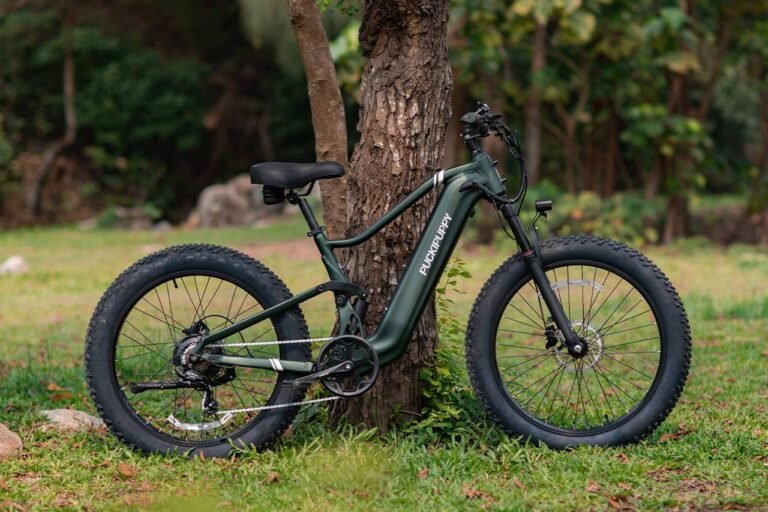
![Top 8 Best Ladies’ Electric Bikes Under $1,000: Comfort, Range & Value ([year]) Best Ladies’ Electric Bikes Under $1,000: Comfort, Range & Value](https://goebikelife.com/wp-content/uploads/2025/09/Best-Ladies-Electric-Bikes-Under-1000-768x512.jpg)
